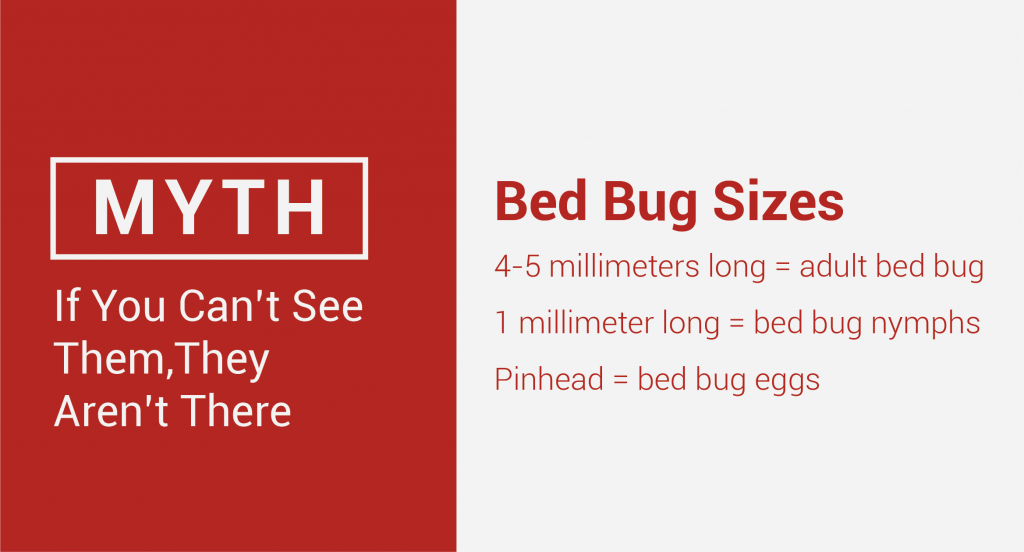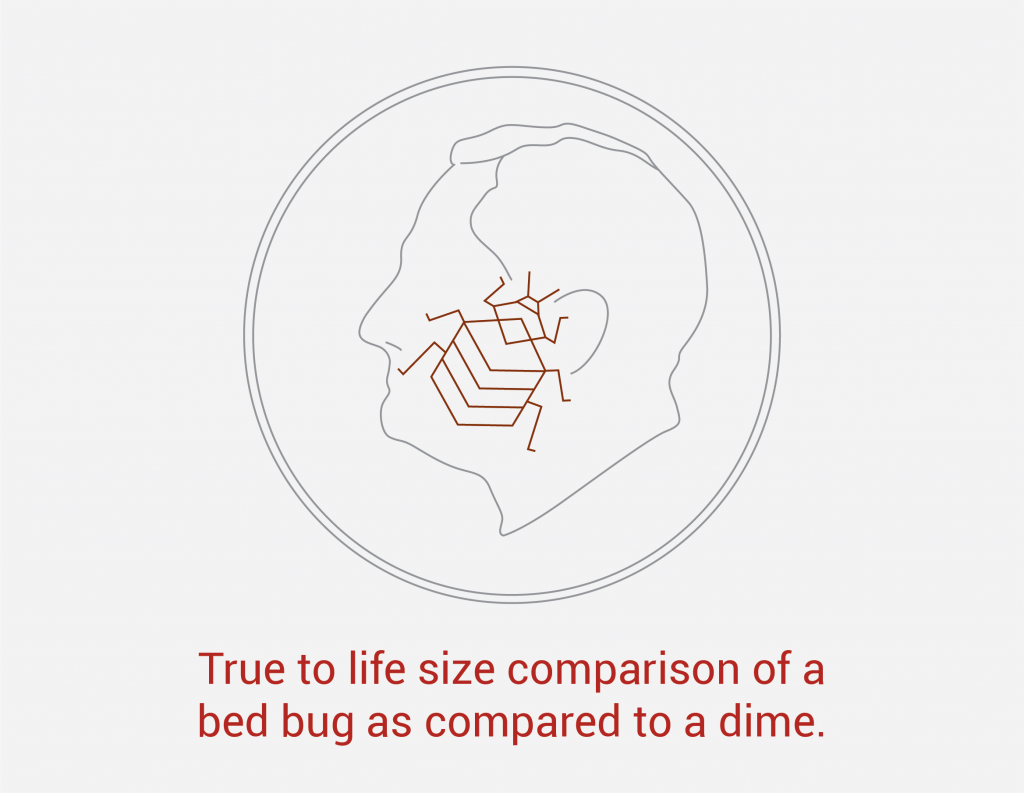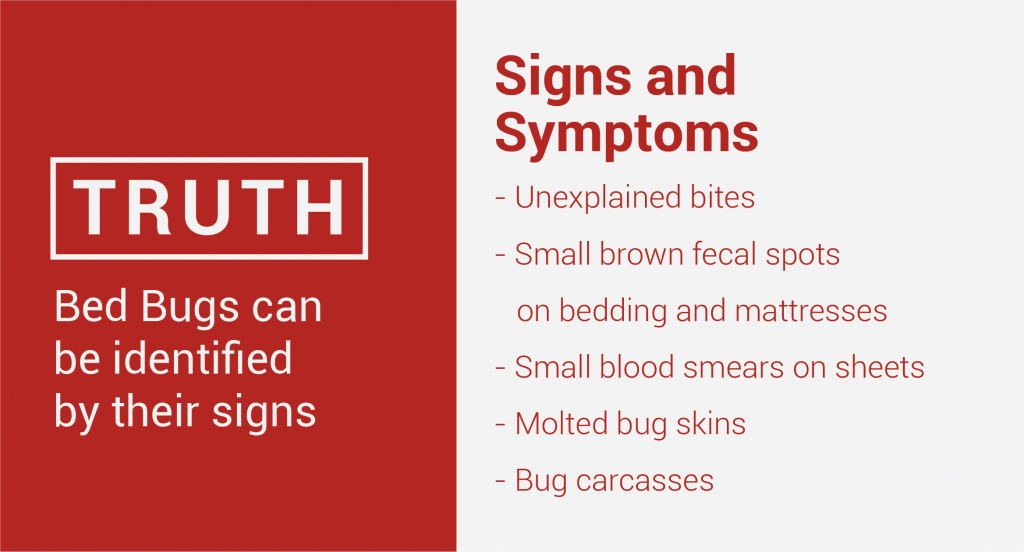Table of Contents
- Where do bed bugs come from?
- What color are bed bugs?
- Do bed bugs smell?
- Do bed bugs fly or have wings?
- How to identify bed bugs?
- How to look for bed bugs in your home?
- How to look for bed bugs when traveling?
- What to do if you find a bed bug?
- What do exterminators use to kill bed bugs?
- Little known facts about bed bugs
Since the 1980s, bed bug infestations have been on the rise. Each year, pest control companies answer thousands of calls from concerned homeowners who are being bitten while they sleep. Bed bugs may be here to stay, but that doesn’t mean that you have to live with them. Read below to learn the top ten things you need to know about bed bugs.
What are bed bugs?
Where do bed bugs come from?
Bed bugs are ancient insects who have fed off of their hosts for centuries. It’s thought that they may have originated in the Middle East in caves that were inhabited by both humans and bats. In the 1990s, archaeologists found fossilized bed bugs while excavating a 3,550-year-old site in Egypt. The fragments of these bugs were thought to have fed on bats, but led to a branch off species that would eventually become the modern bug that will feed on humans.
Their history can be traced back through their scientific name, Cimex lectularius. In ancient Rome, these pests were called Cimex, meaning bug, and the species designation lectularius refers to a couch or bed. Mentions of bed bugs appear in several plays by the ancient Greek writer Aristophanes, who died in 386 B.C., and in the Jewish Talmud, among countless other literary sources. Though considered a nuisance today, ancient civilizations were known to praise them for their believed medicinal properties. Roman philosopher Pliny wrote in 77 A.D. that bed bugs could heal snake bites, ear infections and other ailments. This healing belief persisted until at least the 1700s, when Guettard recommended using them to treat hysteria.
When the Americas began to be colonized, the settlers brought their fair share of pests with them. Colonial writings document severe pest problems in both America and the English colonies during the late 1700s. By the mid-1800s both the rich and poor populations were plagued with bed bug infestations, due to overcrowding and low cleanliness standards.
By the early 20th century, the majority of Americans had either seen a bed bug or been bitten by one. Surveys at the time showed that about ⅓ of residences were infested. As the bed bug population proliferated, so did methods for eradicating the bloodsucking creatures. Early techniques included smoking them out with peat fires, sterilizing furniture with boiling hot water and scattering plant ash. In the 1920s, cyanide fumigation for bed bug management resulted in numerous human deaths, according to Snetsinger, author of “The Ratcatcher’s Child: The History of the Pest Control Industry.”
But then, something happened and all of the bed bugs disappeared. By the 1950s, entomologists were having trouble finding enough bed bug samples to test in their labs. That something was the introduction of DDT. During this time, DDT was used to control cockroaches and other bug populations. When DDT was sprayed in a home, the effects would last up to a year, and was believed to disrupt the beginning stages of bed bug formation, effectively leading to their demise.
However, in 1972, DDT was banned for use as a pesticide. It was thought that DDT and other pesticides could cause cancer and also endanger wildlife, especially the bird population. Since the ban, the bed bug population has been on the rise since the 1980s. Due to the growing number of people partaking in international travel, these pests have resurfaced with a vengeance.

What Color Are Bed Bugs?
Bed bug color varies during the life stages of a bed bug. Their life cycle begins with an egg, which is milky white in color, about a millimeter long and resembles a grain of rice. Female bed bugs can lay one to five eggs each day, averaging 540 eggs in a lifetime. These eggs are laid in cracks and crevices and can be extremely hard to spot. This high number means that one pregnant female bed bug can cause an infestation on her own.
The eggs hatch within two weeks and baby bed bugs, or nymphs, emerge. Nymphs are nearly colorless when they first hatch, and are almost transparent. Anatomically, they look like miniature adult bed bugs. These nymphs grow to full adulthood in about 21 days and go through five molting stages of development before they reach maturity. Bed bugs molt in a process called ecdysis, which is the way that many invertebrates shed their exoskeleton to make room for growth or to regenerate damaged tissue.
Nymphs must have a blood meal before they can progress to the next stage of development. Each molting stage is called an instar, and with each instar the young bug takes on a darker red-brown color. In ideal development conditions, where the temperature is mildly cool and a human host is present, a nymph can feed weekly and mature within five weeks, quickly progressing through all four instars.
After reaching maturity, adults typically continue to feed weekly. Adults are reddish brown in color, and roughly the size and shape of an apple seed. As they feed, their abdomen extends to accommodate their blood meal. After feeding, they scurry off to their hiding places to digest their meal, seek a mate or rest.

Do Bed Bugs Smell?
Not everyone can smell bed bugs. Bed bugs have scent glands that produce a smell that is often described as smelling like coriander. Interestingly, the Greek word for “bug” is at the root of the word koris. When the seeds of coriander are ripe, they emit a musty, sweetish aroma that has been compared to that of bedbugs. Other reported smells include spoiled raspberries, almonds or acidic marzipan. Houses that have an infestation may begin to smell like moldy shoes or wet clothing. This musky smell is due to the pheromones released by the bugs.
Most humans cannot smell these bugs, especially when only a few are present. This is why scent detection canines are of utmost importance when it comes to bed bug detection. These canines are specially trained to detect the pheromones given off by bed bugs, and have a 99% detection rate. This far surpasses any human detection ability.
Do Bed Bugs Fly or Have Wings?
These bugs do not have wings and are not capable of flight. Unlike other wingless insects, they do not possess the ability to jump long distances, either. Bed bugs are insects that belong to the order Hemiptera, or true bugs. Bed bugs move from host to host by crawling with their six tiny legs. Their preferred method of travel is to attach themselves to personal belongings like luggage, purses, gym bags or other items which are kept close to sleep areas. These items are then carried into a home, where they can make their way to a mattress or box spring to lay eggs.
How To Inspect for Bed Bugs
How to Identify Bed Bugs
If you have an infestation, it is best to find it early, before the infestation becomes established or spreads. Treating a minor infestation, while an inconvenience, is far less costly and easier than treating the same infestation after it becomes more widespread.
However, smaller infestations can be harder to correctly identify. Other insects, such as carpet beetles or fleas, can be easily mistaken for bed bugs. Common signs of bed bugs include:
- Unexplained bites
- Small brown fecal spots on bedding and mattresses
- Small blood smears on sheets
- Molted bug skins
- Bug carcasses
- Bed bug eggs may be found in the seams and folds of a mattress and box spring, behind headboards, and even along baseboards.
How to Look for Bed Bugs in Your Home
When not feeding, bed bugs hide in a variety of places. They can be found around the bed; they can be found near the piping, seams and tags of the mattress and box spring; and in cracks on the bed frame and headboard. Use a flashlight and a stiff flat edged object such as a credit card to check the common hiding places and areas you suspect they could be hiding.
Look for adult bed bugs, eggs, molted skin and fecal spots as evidence of an infestation. Bed bugs are attracted to warmth. The number one hiding place for bed bugs is in mattresses and beds. Inspect your sheets for blood spots bed bugs may have left behind. Thoroughly inspect any seams and folds present on your mattress and in your bedding.

Bed bugs can also linger in any place where humans sit for periods of time, such as couches, recliners and rocking chairs. Don’t forget to look beneath furniture, where fabric meets the legs of the furniture, and between seat cushions.
Other less common, but still important hiding spots include baseboards, drawers, curtains, drapes, ceilings, behind loose wallpaper, behind outlet covers, under lamps, inside picture frames, and inside alarm clocks or other home electronics.
How to Look for Bed Bugs When Traveling
One of the most common places for bed bugs to begin their journey to your home is in hotel rooms. Hotels from all budget levels, from bargain motels to five star resorts, have had to deal with bed bugs in recent years. When you are traveling, there are a few things you can do to prevent unwanted hitchhikers from coming home with you.
- Don’t unpack immediately. Avoid setting your luggage on the floor or bed. Place your luggage on the luggage rack instead.
- Use your cell phone flashlight to inspect the linens on the bed for any signs of bed bug activity, all the way down to the mattress.
- Check any furniture in the room for the same signs, as well as the curtains.
- Throughout your stay, check your skin for any symptoms of bites.
- When you return home, place all clothing into the laundry immediately, even if you haven’t worn them.
- Inspect your suitcase for any signs of bed bugs, and vacuum thoroughly.
If you think you notice any signs of bed bugs, be sure to report them to your hotel’s staff. They want to know immediately if there is any pest activity within their building.
What to Do if You Find a Bed Bug
In order to get rid of bed bugs, you must first clean the places where they live. Clean any bedding, linens, curtains and clothing in hot water and dry them on the hottest setting. Clean any stuffed animals, shoes, and other items that can’t be washed in the dryer and run on high for 30 minutes.
Use a stiff brush to scrub mattress seams to remove bedbugs and their eggs before vacuuming. Vacuum the bed and the surrounding area thoroughly and frequently. After vacuuming, immediately place the vacuum cleaner bag in a plastic bag and place in garbage can outdoors. If the vacuum is bagless, the contents of the canister should be emptied into a trash bag and tied shut. The canister should then be washed to remove any remaining bed bugs or eggs.
Place your mattress in a tightly woven, zippered cover to keep bed bugs from entering or escaping. Bed bugs can live up to a year without feeding, so keep this cover on for at least this long to prevent re-infesting your home. Repair any cracks in the furniture or walls around the bed, and glue down peeling wallpaper.
While there are steps you can take on your own, bed bug infestations can be difficult to manage on your own, so it’s best to call a pest control company at the first sign of bed bugs. If you miss one pregnant female bed bug you can be reinfested with over 300 adults and 1000 new eggs in three months!
What do Exterminators Use to Kill Bed Bugs?
There are many methods used to treat bed bug infestations. However, some are more effective than others. Below are some of the most common treatments.
Heat Treatment
To be effective, a heat treatment must reach 150–170 degrees Fahrenheit. These treatments can be difficult to administer, though, because as an area heats up, the bed bugs will simply move to a cooler area away from the heat source. For smaller items that have been infested, such as pillows or clothing, heat is a viable option if used in the setting of a dryer.
Diatomaceous Earth
In some instances, diatomaceous earth is used to control bed bug populations. Diatomaceous earth is derived from fossilized sea creatures called diatoms whose bodies were made up primarily of silicon dioxide. This substances is applied to the cracks and crevices where bed bugs live, and acts as a physical barrier to keep them from moving to other rooms. When bed bugs crawl across the diatomaceous earth, it acts like shattered glass, tearing the bed bugs’ stomachs open.
Fumigation
A fumigation is the most effective way to treat a bed bug infestation. During this process, either the infested room or the whole building is sealed, and a fumigant is released into the air. Because the treatment is applied with a gas, the fumigant is able to penetrate even the smallest crevice to eliminate any bed bugs.
Home Remedies
There are many home remedies circulating the internet, including essential oils, various spices, excessive vacuuming, baking soda, tea and more. While these remedies may show temporary relief, they are not a substitute for a pest professional. Attempting to treat an infestation yourself will only result in wasted time and money.

Little Known Facts about Bed Bugs
Bed Bugs are Picky Eaters
Bed bugs aren’t blood thirsty monsters looking for blood in all possible places. In fact, they will only feed on live hosts, and will not drink any spilled blood. When they bite, they carefully choose areas where blood flows close to the surface. If they aren’t able to find a suitable host, bed bugs can go up to a year without feeding.
Bed Bugs are Hardy Pests
Since the introduction of DDT in the 1950s, bed bugs have become resistant to a number of pesticides. The short time it takes for these bugs to produce has made it hard for experts to predict how long it will take before the are resistant to current methods. This is one of the many reasons to call a professional, as they are up to date in current treatment techniques.
Bed Bugs Live in Clean Places
One common misconception about bed bugs is that they are only found in unclean places. This is not true. The only requirement to have bed bugs is to visit a place that already has them, or have someone else bring them into your house. Bed bugs are equal opportunity invaders.

Get a Free Bed Bug Inspection
At Dodson Pest Control, we provide free inspections to all of our potential customers. This allows us to identify your problem and create a customized treatment plan to ensure that your house gets and remains bed bug free. If you would like to schedule your free consultation, simply fill out this form.
